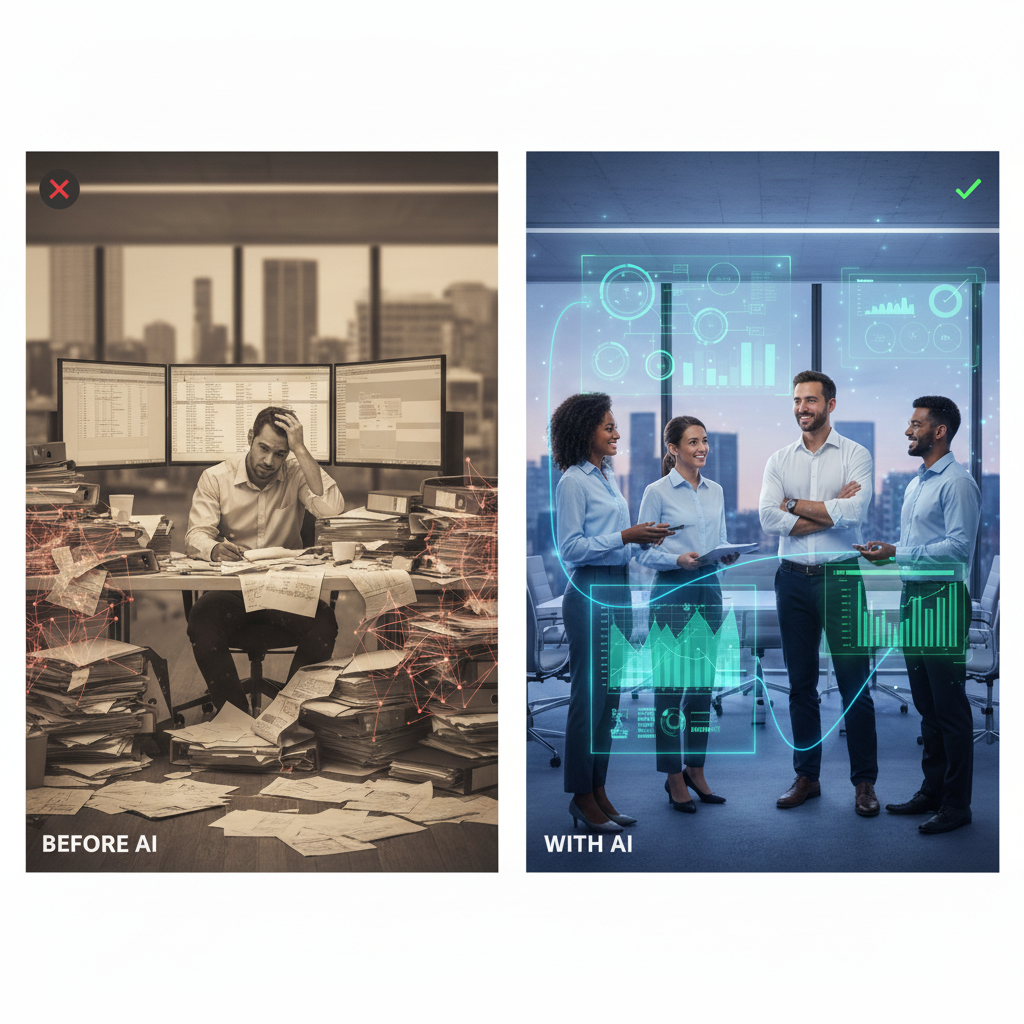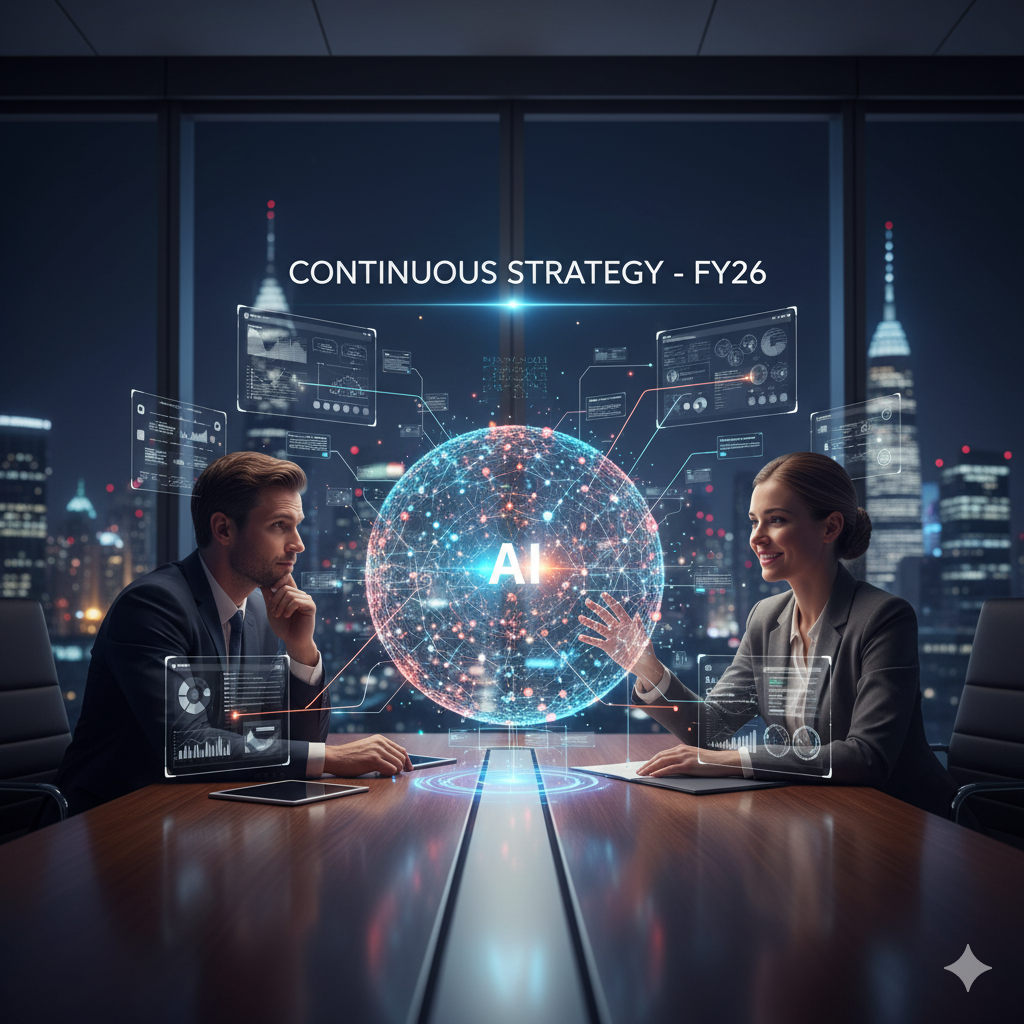Students Already Use AI. Now Make It Visible.
How transparency raises standards, reduces disputes, and prepares students for professional work.
5 min read
 Christina Marchetti
:
Oct 14, 2025 1:33:03 PM
Christina Marchetti
:
Oct 14, 2025 1:33:03 PM

AI for Strategic Planning, Part 1
Every year, planning season starts with energy and ends with exhaustion. Teams spend months chasing data, fixing formulas, and building models that are outdated before the offsite even begins. By the time the deck is ready, your best strategists have spent more time managing process than thinking strategically.
This is the hidden cost of planning: the people best equipped to shape the future are buried in administration. Weeks vanish into data collection and formatting. The real work of strategy, including testing assumptions, exploring scenarios, and making tough choices, gets squeezed into whatever energy remains.
Strategic planning has always required discipline, but the scale of administrative work has become unsustainable. Teams lose weeks chasing numbers and reformatting slides, starving planning of what it needs most: time to think strategically.
When your best thinkers are buried in administration, three things suffer:
Creativity disappears. Imagination needs space, and that space vanishes when someone is still chasing quarterly actuals at 11 p.m. Breakthrough insights do not come from tired minds staring at spreadsheets. They come from rested ones asking, "What if we tried something completely different?"
Bias compounds. Exhausted teams default to familiar assumptions instead of testing them. Copying last year's playbook feels safer than asking whether you are still solving the right problem.
Execution weakens before it begins. Plans built by tired teams often lack the clarity needed for alignment. When strategists are drained by mechanics, they struggle to build conviction around difficult choices. The strategy deck looks beautiful, but nobody can remember why option B beat option C.
These failures are not random. They are the predictable result of misallocating your scarcest resource: strategic thinking capacity.
This is not about automation. It is about liberation.
Research from McKinsey & Company identifies five ways AI enhances strategy work: researcher, interpreter, thought partner, simulator, and communicator. Each removes a longstanding constraint on planning capacity.
As the researcher, AI scans millions of data points and connects insights across sources in minutes. McKinsey reports that an AI powered engine can evaluate more than 40 million companies across languages and generate a prioritized list based on strategic fit. What took analysts months now takes hours.
As the interpreter, AI converts raw data from reports, patents, reviews, and purchasing patterns into usable growth insights. It detects patterns humans miss simply because the volume exceeds human capacity.
As the thought partner, Harvard Business Review found that CEOs using generative AI uncovered alternatives managers missed by overcoming human bias. AI can pressure test strategies against established frameworks and flag pitfalls insiders overlook.
As the simulator, McKinsey & Company explains that AI supports scenario analysis. Teams can explore the impact of macroeconomic shifts, competitor moves, and stakeholder reactions. During execution, the technology can monitor early market signals, simulate their effects, and alert teams when conditions warrant course correction.
As the communicator, AI helps craft narratives for different audiences. It adapts complex concepts for regions, regulators, or analysts, keeping the message consistent while addressing each group's priorities.
These capabilities free people to do what they do best: make judgment calls, challenge assumptions, and imagine what data cannot. But here is what most companies miss: they implement AI and still run the same meeting cadence, the same review cycles, the same approval chains. The process stays slow even though the analysis is fast. You need to redesign how decisions flow, not just how data moves.
AI does not erase the work. It changes who does it and how much energy it consumes.
AI shortens the lag between a new signal and a clear call. Track one outcome: time from “we saw something” to “we decided something.” When AI handles research prep, first-pass synthesis, and draft updates, leaders recover hours each week and choices happen sooner. Faster calls also lower rework because teams act while evidence is still fresh.
Consider a typical mid-sized organization with a 12-week planning cycle.
Before AI (12 weeks)
Time on strategy: about one week
Time on mechanics: about eleven weeks
With AI (6 weeks)
Time on strategy: about five weeks
Time on mechanics: about one week
The pattern holds across industries. Mechanical work still happens, but you stop doing it manually. Teams spend energy on judgment, not wrangling. The bottleneck moves from “When will the model be done?” to “Are we asking the right questions? ”
The shift is already happening. Harvard Business Review documented CEOs experimenting with AI for strategic planning in September 2024. By February 2025, McKinsey showed AI moving from pilots to core infrastructure. PwC's 2024 research shows that companies integrating AI into core strategy see 20 to 30 percent gains in productivity, speed to market, and revenue.
The window is closing. Early movers are not just working faster. They are thinking differently. While competitors chase last quarter's data, these teams are stress testing next year's assumptions. While others format slides, they are interviewing customers about emerging needs. While boardrooms debate whether AI is ready, these strategists are building conviction around bolder choices because they finally have time to explore them.
Speed matters because it frees capacity for the thinking that actually differentiates strategy.
AI sees patterns in noise, weak signals in data, and second order effects in scenarios.
Humans see possibilities rooted in capability, judgment built from experience, and context that defies the numbers.
McKinsey's analysis emphasizes that process quality, how teams debate options, handle uncertainty, and remove bias, matters more than raw insight quality. As AI accelerates analysis, it gives strategy teams more time to strengthen these human processes.
When your team finally has time to think, here are the questions that decide success:
These questions need human judgment, pattern recognition, and courage. AI cannot answer them, but it can finally make time to ask them.
At RightSeat, we believe the future belongs to organizations that master the partnership between human ingenuity and AI capability. Not one or the other. Both.
We help leadership teams redesign planning around AI capability by addressing the implementation gaps that cause most AI planning initiatives to stall.
Most companies add AI tools to existing planning processes and see disappointing results. They get faster scenario models but keep monthly decision meetings. They reclaim strategist time but use it to verify AI outputs instead of stress testing assumptions. The analysis accelerates, but the planning process stays slow.
We start differently. We assess where strategic capacity is currently trapped, then redesign three elements before implementing tools:
Decision cadence. If AI can update scenarios weekly, we help teams move from monthly strategy reviews to weekly decision standups. The planning rhythm should match the analytical capability.
Capacity allocation. When AI handles data work, we help redirect strategist time toward assumption testing, not output verification. The question shifts from "is the model right?" to "which assumptions, if wrong, would invalidate our strategy?"
AI's role in the process. We position AI as an exploration tool that helps teams consider more strategic options faster, not as an oracle that produces finished strategy. Human judgment still determines which options fit organizational capability and risk tolerance.
The result is planning that feels lighter and sharper because we redesign the system, not just add technology to it.
Coming up in Part 2, we’ll explore how AI helps strategic plans come alive so they stay relevant, evolve with new data, and adjust as markets shift.
Sources:
McKinsey & Company. (February 5, 2025). How AI is transforming strategy development. https://www.mckinsey.com/capabilities/strategy-and-corporate-finance/our-insights/how-ai-is-transforming-strategy-development
Harvard Business Review. (September 11, 2024). How CEOs Are Using Gen AI for Strategic Planning. https://hbr.org/2024/09/how-ceos-are-using-gen-ai-for-strategic-planning
PwC. (2024). 2024 AI Business Predictions. https://www.pwc.com/us/en/tech-effect/ai-analytics/ai-predictions.html
Coming up in Part 2, we’ll explore how AI helps strategic plans come alive so they stay relevant, evolve with new data, and adjust as markets shift.
Add your email below and we'll send you newsletters and blog updates from the RightSeat AI TrustLab

How transparency raises standards, reduces disputes, and prepares students for professional work.

Part 2: AI for Strategic Planning

AI for Strategic Planning, Part 1